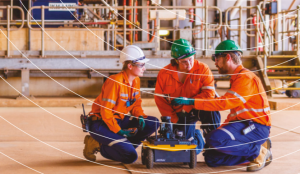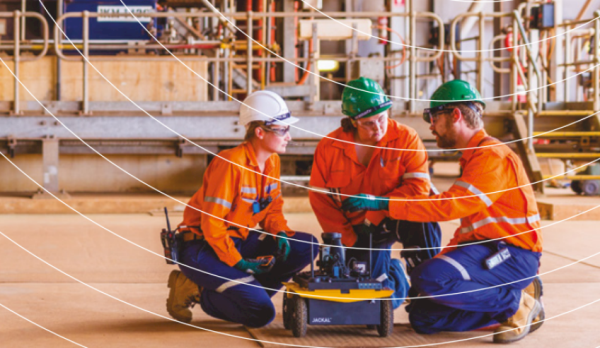Australia’s first Robotics and Computer Vision Roadmap is a ground-breaking document that provides industry and government with a valuable insight into Australia’s robotics sector.
Launched in 2018, the Roadmap is designed to inform policy and guide future research directions. It also assists with the development of new robotic and vision technologies required to support Australian industry in the future.
Led by the Australian Centre for Robotic Vision – with additional backing from Queensland University of Technology and Advance Queensland – the roadmap’s organisers aim to emulate the success of similar initiatives in the US and Europe.
The architect and driving force behind the document, Dr Sue Keay has announced plans to publish an updated version, incorporating latest research and new technologies.
Dr Keay is now mustering some of Australia’s sharpest minds in industry and robotics to take part in a series of workshops to be held across the nation.
The outcomes of those workshops will assist researchers in completing the revised Roadmap.
Dr Keay, who now holds the position of Research Director – Cyber Physical Systems at CSIRO’s Data61 says the main priority is to increase the visibility of robotics in Australia.
“Unfortunately, few people are aware that Australia is good at developing robotics technologies,” she says. “That’s one of the main reasons robotics is often overlooked as a potential career choice.”
Call for contributions
Dr Keay says greater industry awareness will help to reverse the current trend of skilled researchers leaving Australia to take up positions in IT hubs overseas, such as Silicon Valley in the US.
“Hopefully, the new Roadmap will identify where we (Australia) need to be in five, 10 or 15 years time,” she says.
A workshop has been scheduled in Perth later this month and will be rolled out in key locations up until the end of May.
Input is being sought from companies in each location from various sectors – including resources, environment, manufacturing, services, healthcare and defence.
Challenges and benefits
Dr Keay says in the past, little was known about Australia’s robotics and computer vision industries and companies in this vital sector.
“As these, and related technologies mature, it is critical to understand and plan for the impact, challenges and the benefits they pose to our nation,” she says.
The second edition, which is expected to be completed early next year, will contain many new elements, including an expanded section on self-driving vehicles, says Dr Keay.
“While Australia no longer has an automobile industry, we must have technologies for next generation vehicles (such as LiDAR detection systems) that can fit into the global supply chain,” she says.
Dr Keay has released a draft timetable of workshops planned so far.
They include:
Resources
Co-chairs: Paul Lucey, Lauren Stafford, Lina Velosa
Perth, February 25
Manufacturing
Co-chairs: Phil Crothers, Saeid Nahavandi, Dana Kulic
Melbourne, March 10
Healthcare
Co-chairs: Ajay Pandey, Dimity Dornan, Robyn Stokes, Denny Oetomo, Olivier Salvado, Leonie Mulheran
Brisbane, March 12
Services (inc. Construction)
Co-chairs: Nathan Kirchner, Nicci Roussow
Sydney, April 2
Defence
Co-chairs: Jason Scholz, Michael Gan (Air Force), Robin Smith (Army), Paul Hornsby (Navy), Dr Marcus Hellyer. Senior Analyst. Australian Strategic Policy Institute
Canberra, April 23
Infrastructure
Co-chairs: Sarath Kapugoda, Nathan Kirchner + Tirtha
Sydney, April 30
Agriculture, Environment
Co-chairs: Elliot Duff/Peyman Moghadam, Stefan Williams, Chris Lehnert + Peter Brett
Brisbane, May 7
Space
Co-chairs: Ross Dungavell, Jonathon Ralston, Mark (Head of Robotics Woodside, ASA)
Adelaide, May 14
Skills
Co-chairs: Jackie French TAFE Qld, Preethi CQU, William Pagnon (Freelance Robotics)
Brisbane, May 29 (TBA)
For more details on the Perth workshop or to book a seat click here.
To participate or learn more about other workshops contact Dr Sue Keay: [email protected]/


